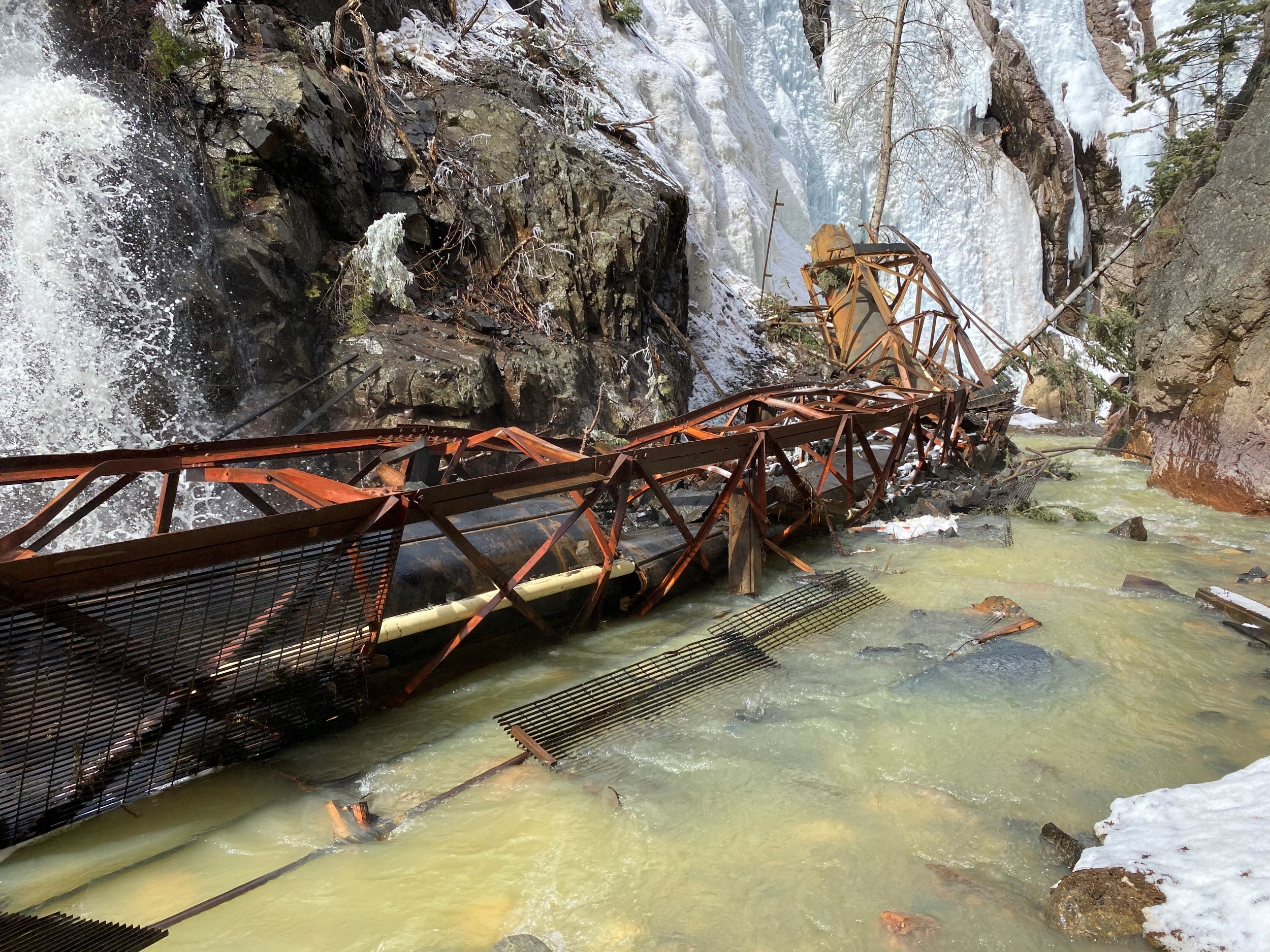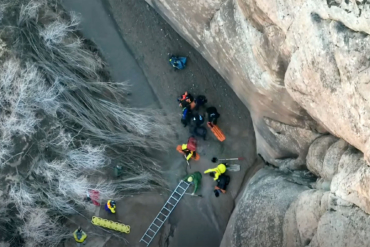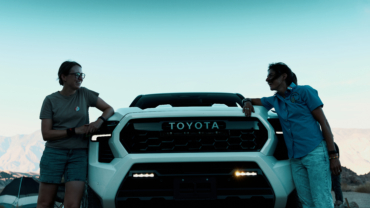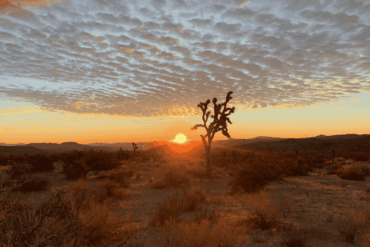The Bureau of Land Management (BLM) recently drafted amendments to the popular Las Vegas recreation hub management plan. And the public comment period closes today.
Would more access restrictions and higher fees help solve Red Rock Canyon park’s most significant problems? The BLM’s most recent proposal for managing southern Nevada’s Red Rock Canyon National Conservation Area takes that approach, by charging visitors more money and tightening restrictions on access.
A glance at the area’s steepest challenges reveals why you’d want to tamp down traffic and increase cash flow. Visitor activity in the sensitive desert ecosystem has skyrocketed in the last few years. Social trails and graffiti are cropping up everywhere, and park staff is struggling to keep up.
From the BLM’s point of view, regulating traffic and charging more money per head can help ease the issues. Channeling proceeds from fees into infrastructure and staffing in “Red Rocks,” as climbers and locals call it, can help protect the resource.
But climbing advocacy group Access Fund sees the BLM’s “less people, more money” approach as problematic. And it wants to propose an alternative.
“We want to find an alternative to a plan that’s highly restrictive and also places more of a financial burden on people,” said Katie Goodwin, Policy Analyst for the Access Fund. “We want a site-specific plan based on better visitor education and resource protection, versus just restricting numbers.”
To help do it, the Access Fund has urged its constituency to participate in the BLM’s public comment period for the new measures. If you want to make your voice heard, you need to do it soon — the public comments period closes today.
But before you do, it’s worth understanding both sides of the argument and focusing on the specific site in question.
Fees or Free? Popular Calico Basin Faces Changes
The BLM currently manages Red Rock Canyon National Conservation Area under a business plan it first published in 2018. That year, changes to the existing management plan included an entry system for the Scenic Loop (access road for the park’s main attractions), which already demanded paid access, and new fees for the area’s lone campground.
The area’s fee structure has not changed since then, and access to the nearby BLM-controlled Calico Basin has remained free.
Here’s the rub. For the first time, the BLM has proposed charging visitors to Calico Basin. The smaller designation adjacent to Red Rocks includes two separate areas. Red Spring consolidates a picnic area and boardwalk, and Kraft Mountain consists of a rapidly popularizing destination bouldering area.
View this post on Instagram
Drivers pay $15 per vehicle to get into the Scenic Loop. Motorcyclists pay $10, and anyone walking or biking pays $5. Following lockstep with the BLM’s proposed fee structure for the loop, the vehicle fee at Calico Basin would be $20. (See the amended business plan for proposed fee changes across Red Rocks.)
In a modest, previously free-access area that visitors like families with young children often frequent for a quick hike or a picnic, $20 could seem like a slap to the face. Las Vegas local Pete Foley hikes in Calico Basin every week. He told local Fox affiliate KVVU that most of the people he encounters there aren’t avid outdoor people.
“That’s a way for people that aren’t hardcore to get into nature, to get into recreation to get into hiking, and I’m really concerned if we take that away, we’re shutting out a whole group of people,” Foley said. “Potential people that are going to be involved in nature and the environment.”
In terms more codified, the Access Fund echoed Foley’s concerns. It also said the BLM’s Calico Basin Recreation Area Management Plan (RAMP) assessed that increased fees would disenfranchise visitors.
“Higher fees will price out people in the community … who can’t afford to pay more to enjoy public lands. The BLM itself acknowledges that fee-based management, especially when combined with gates and timed-entry reservation systems, has a disproportionate impact on marginalized communities’ ability to enjoy this very special place,” it stated.
Parking Restrictions? Solutions Elude Planners
The BLM also proposed limiting access to Calico Basin with a parking reservation system. Prospective visitors would reserve a spot online at the Red Spring or Kraft Mountain parking lot. Reservations would close once availability for a specific time slot ran out.
That’s roughly the same system implemented for the Scenic Loop in 2020. The previous year, a study showed the area typically labored under 300% of its capacity from 2016 to 2019. Anecdotal evidence showed visitor numbers had started to grow out of control.
View this post on Instagram
The Access Fund also takes issue with that initiative, but its suggestions for alternatives to either plan remain vague.
Admittedly, a straightforward solution to Calico Basin traffic doesn’t exactly jump off the page. The area butts up on one side against the sandstone pinnacles that define the park. On the other side, an ever-encroaching residential neighborhood with private streets and driveways creeps toward it.
There’s no obvious place to put more parking surfaces without asphalting more of the desert.
In a statement attached to its public comment submission forms, the Access Fund advocates for “other, less-restrictive strategies to provide sustainable management that balances recreation access with protecting natural resources” in Calico Basin.
Asked what those would be, Goodwin said the following: “We’re not arguing that there needs to be a higher level of management in Calico, even though user numbers and impacts are increasing. But when you look at how they can actually manage that, a lot of the issues come from people parking illegally. Some of our suggestions include increasing visitor education and managing the parking situation to decrease the burden on people who live there.”
Visitor education, she asserted, would include measures to inform users about local flora and fauna. It could also discourage them from committing common desert hiking no-nos like walking off trail and leaving pet waste behind. Infrastructure like signage and increased staffing could play a role — a point the BLM also makes.
It’s less clear what solution to the parking overflow the Access Fund envisions. Goodwin mentioned “increased enforcement” but acknowledged that ticketing more illegally parked cars wouldn’t disenfranchise visitors any less than time- and pay-restricted parking.
And wouldn’t a parking lot attendant telling someone, “Turn around, the lot’s full,” amount to the same thing as missing out on a reservation?
That’s likely an oversimplification of what the Access Fund has in mind. But it also serves to illuminate the issue’s trenchant complexity. In the case of Calico Basin, a clear either/or does not appear to exist.
Especially when you consider the potential spillover effect into other areas.
Restricting Calico Basin Could Increase Burden Elsewhere
What happens when you start charging for one thing but offer something similar for free alongside it?
That’s right; more people gravitate toward the free option. That’s what Goodwin and some local climbers think will happen to other outlying Red Rocks areas if Calico Basin becomes a paid area.
Canyons south of the park along State Highway 159 will remain free to access for the foreseeable future. Locations like First Creek Canyon and Mount Wilson feature free hiking and parking off the highway. So, too, does Black Velvet Canyon, though it’s a little harder to access.
One likely outcome of the BLM’s plan would be that Calico Basin and the Scenic Loop would fill up with reservations on a given day. (In the loop, reservations fill up relatively often during the high season.) If and when that happened, it could force people into the southern canyons — where there are no bathrooms or trash cans and very little trail signage to help keep people on track.
Furthermore, trails there tend to be more demanding. Hikes are longer, and destinations are far more remote.
In Calico Basin, by contrast, visitor resources are plentiful. Signage with trail and ecology information is prominent and frequent, bathrooms exist, and shade is available.
The implications are apparent. Increased traffic could mean a much steeper impact on the under-resourced canyons. And if casual hikers visit the remote canyons expecting a frontcountry experience, they could encounter unwelcome surprises.
Public Comment Period Closes Today
The public comment period on the BLM’s new Red Rock National Conservation Area fee proposal and management plan closes late this afternoon. To make your voice heard, you can go through the Access Fund’s “Take Action” page or email the BLM directly at this address: BLM_NV_LV_RR_FEE_STATION_IMPRVMTS@blm.gov.
You can also check in with the Southern Nevada Climbers Coalition. The group monitors the situation closely and actively leads climbing advocacy measures in the area.








